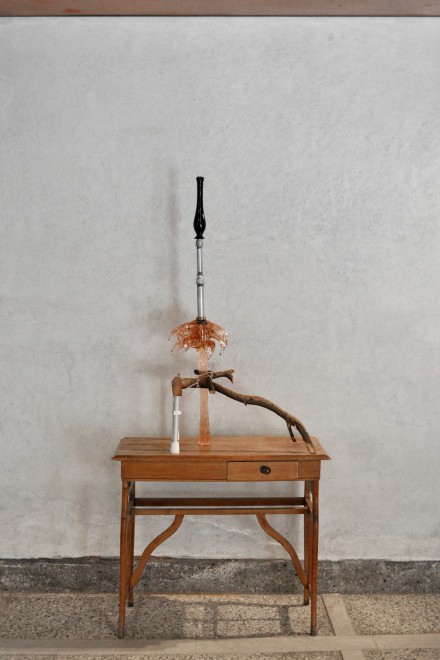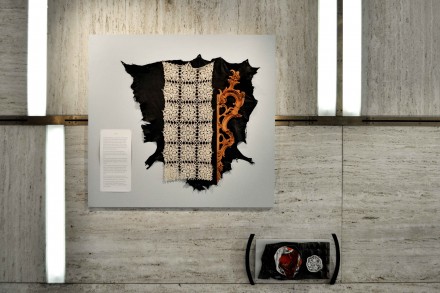
Jimmie Durham, On The Island of Burano Women Make Lace Hopefully (2015), all photos by Sophie Kitching for Art Observed
The American-born artist and poet Jimmie Durham presents a site-specific project entitled Venice: Object, Work and Tourism at the Fondazione Querini Stampalia during the 56th Venice Biennale. The exhibition features a series of subtle yet vibrant sculptures, which incite our perception of commonplace objects and everyday materials. Stone, glass, brick, wood, water, words, gold, leather, paper, metal, shell, and plastic are thus collected, displaced and assembled by the artist, distilling a new physical language.
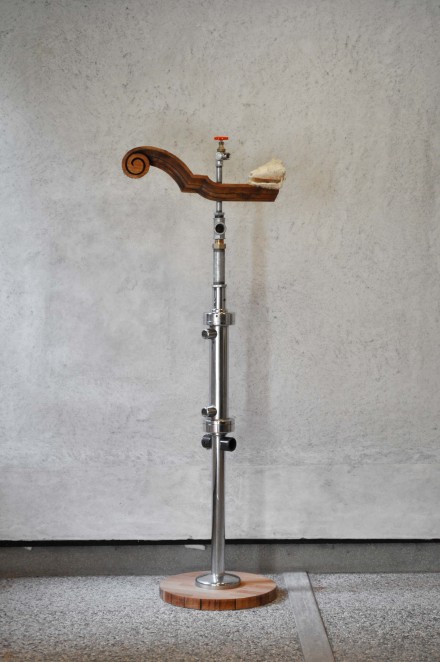
Jimmie Durham, Not Exactly Sequitorious (2015), via Sophie Kitching for Art Observed
The exhibition focuses on Durham’s approach to the city of Venice as an open-air museum and cultural stage, attracting an ever-increasing stream of tourists. ‘La Serenissima’ gathers qualities of the absolute experience of beauty thanks to centuries of Grand Masters who magnified its colors, light and sounds: Bellini and Giorgione in the Quattrocento; Tintoretto, Titien and Veronese, great trio of the Cinquecento; Vivaldi and Cavalli, Baroque composers; Tiepolo and Canaletto in the XVIIIth century. The archipelago however maintains its hegemonic cultural position today by hosting international Contemporary Art, Architecture and Cinema biennials.
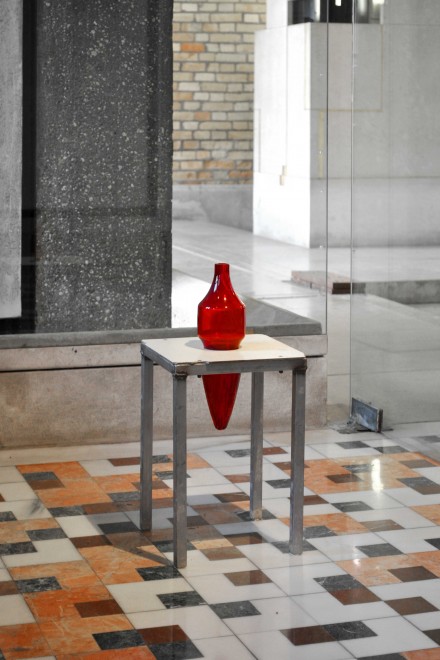
Jimmie Durham, The Great Religions of the World Use Objects Abundantly (2015), via Sophie Kitching for Art Observed
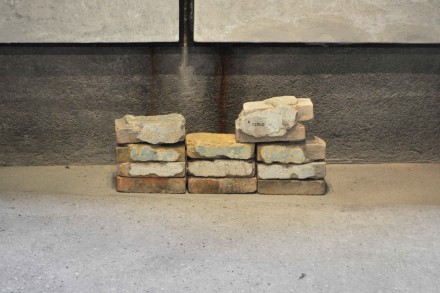
Jimmie Durham, These Twelve Bricks Were Used to Represent the Dawn Sky in Venice (2015), via Sophie Kitching for Art Observed
Nevertheless, Jimmie Durham carries his interest on the invisible mass of local people, mostly foreigners from Bangladesh, Senegal and Tunisia, who work at constantly rebuilding this fantasized heritage. Carpenters, glass blowers, boat builders, goldbeaters, restaurant owners work in the bend of narrow passageways, fostering the so-called Venetian experience by recreating its symbolic man-made objects. The artist thus addresses the undisputable connection between labor and folklore, tourism and craftsmanship.
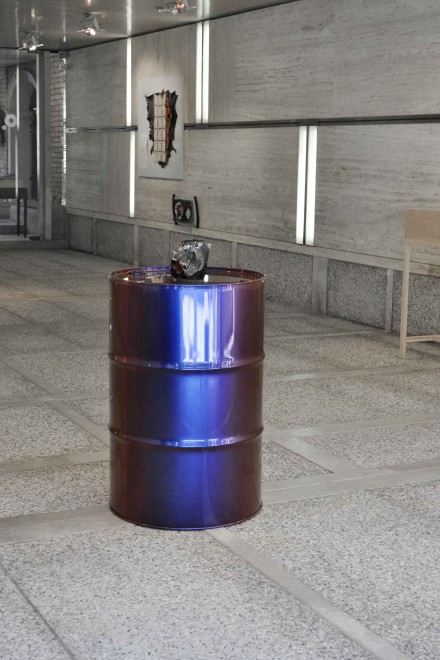
Jimmie Durham, Mestre Surely was Intended to Bring Development to the Lagoon of Venice (2015), via Sophie Kitching for Art Observed
Each sculpture presents itself as an enigma, primitive, incongruous and beautiful. Their titles These Twelve Bricks Were Used to Represent the Dawn Sky in Venice, Carnivalesque Shark in Venice or Different Ways of Organizing Matter Venice capture their witty essence and infuse a discrete subjective voice to the final object as a whole. Language holds a preeminent place in Durham’s practice. Words are indeed treated as a material in itself, with its own physicality and representational aspect. The presence of typewritten text in On The Island of Burano Women Make Lace Hopefully emphasises the overall sense of proximity towards the work.
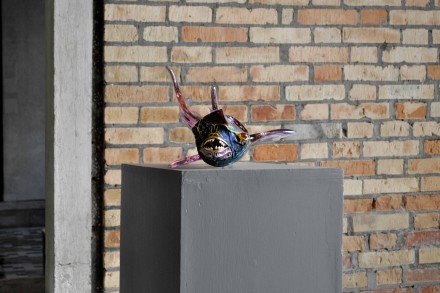
Jimmie Durham, Carnivalesque Shark in Venice (2015), via Sophie Kitching for Art Observed
These factual and autobiographical notes give clues to understand the initial encounter with the material. To a certain extent, each work carries the past lives of its collected components on the one hand, and their interaction with the artist on the other hand. An intimate and poetic feeling emerges from the whole exhibition, inviting the viewer to enter the artist’s experimental creative process and to connect on a deeper level with the individual works.
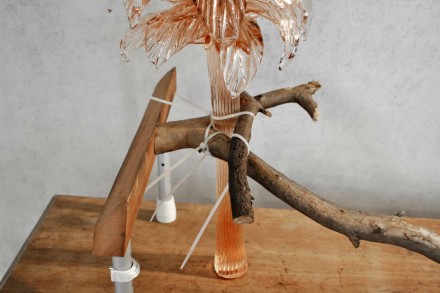
Jimmie Durham, Pink Palm-Tree-Like Glass Construction with Various Decorative Elements (2015), detail, via Sophie Kitching for Art Observed
Furthermore, the bold Dead Man and Southern Italy Has Huge Forests of Large Chestnut Trees present a similar wood and metal combination. The first is a horizontal rectangular tree trunk lying on the Gallery floor, and the second is a vertical rectangular tree trunk leaning against the wall. They behave as the distorted reflection of one another, connecting indoor and outdoor or ground and sky. The titles, humorous and bizarre, convey their autonomy to each of the volumes, thus unveiling the infinite evocative power of the sole material.
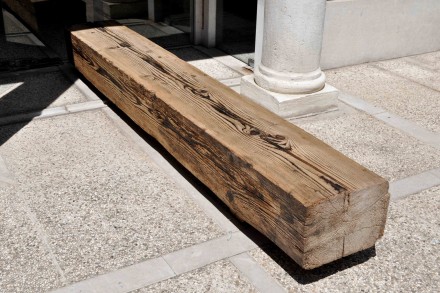
Jimmie Durham, Dead Man (2015), via Sophie Kitching for Art Observed
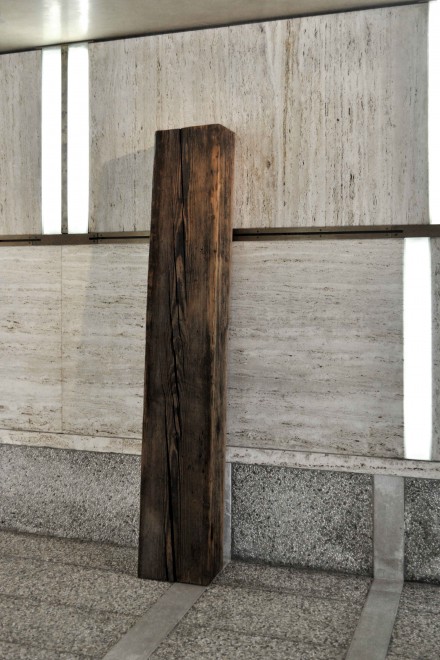
Jimmie Durham, Southern Italy Has Huge Forests of Large Chestnut Trees (2015), via Sophie Kitching for Art Observed
In Colored Glass and Steel Construction with Epoxy Glue or Onyx with Soap-Bubble Glass, Connected by Steel and Epoxy Glue (Basso), the artist insists on the additional material he used to interrelate the found objects. In A Representation of Various Fauna and Possible Flora on the Floor of the Venice Lagoon the location of origin becomes an integral part of the work. Jimmie Durham thus projects his own fantasies and narratives on the objects he meets. His humble yet precise interventions arise from the unexpected combinations of textures and colours in relation to scale and space within the given architecture. Nothing is left to chance, and the result is particulary liberating.
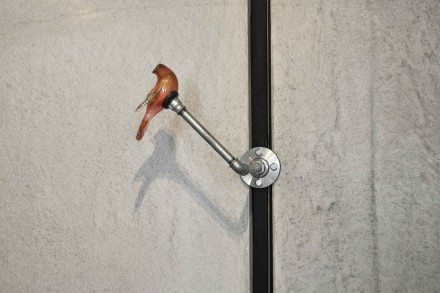
Jimmie Durham, Colored Glass and Steel Construction with Epoxy Glue (2015), via Sophie Kitching for Art Observed
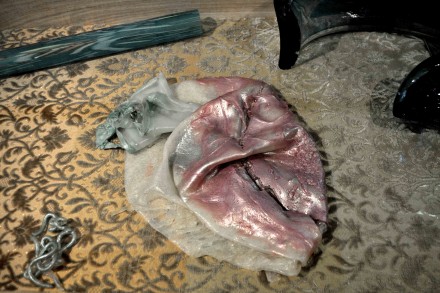
Jimmie Durham, A Representation of Various Fauna and Possible Flora on the Floor of the Venice Lagoon (2015), detail, via Sophie Kitching for Art Observed
By recontextualizing heterogeneous ‘debris’ of the tourism industries, Durham seems to favor physicality over aura, the tangible over the legendary. By reinventing the ‘Made in Venice’, the sculptor proposes new totemic objects as contemporary treasures rooted in the hidden and the random. Ultimately he generates an unexpected ‘living situation’ which transcends the mere object and expands its scope of meanings. The economy of means in Jimmie Durham’s work is thus inversely proportional to the eloquence of his discourse.
Venice: Object, Work and Tourism is on view at the Fondazione Querini Stampalia, Venice through September 20th, 2015.
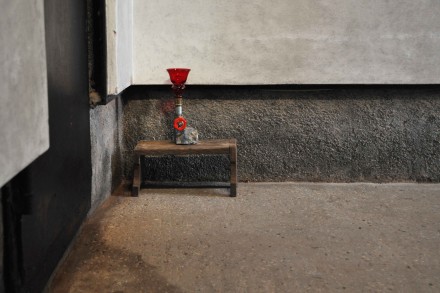
Jimmie Durham, Lapis Lazuli with Venetian Red Glass, a Valve, Et Cetera (2015), via Sophie Kitching for Art Observed
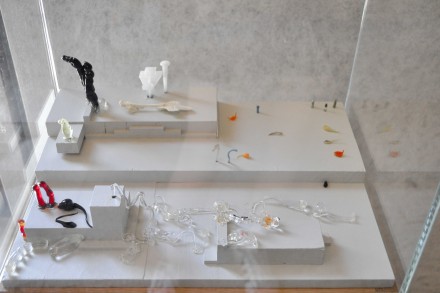
Jimmie Durham, Wood and Glass on the Outside, a Fantasy-Like Construction Inside (2015), via Sophie Kitching for Art Observed
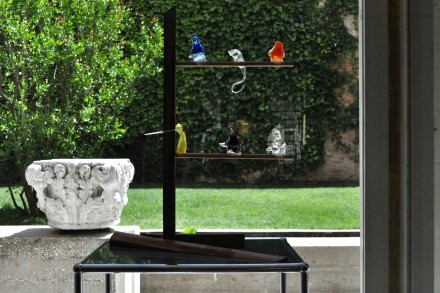
Jimmie Durham, Hand-Blown Glass Reminding one of Birds (2015), via Sophie Kitching for Art Observed
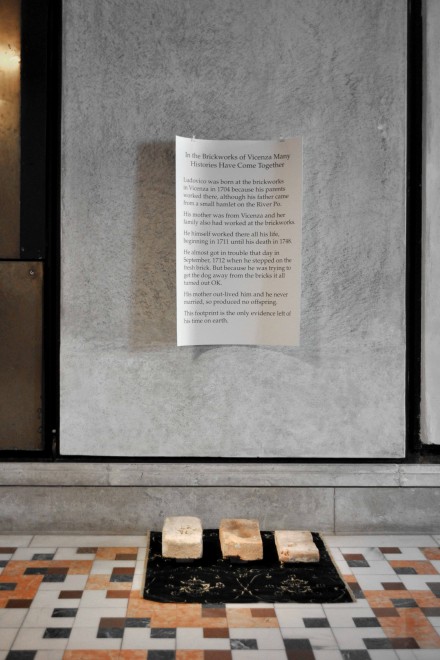
Jimmie Durham, In the Brickworkds of Vicenza Many Histories Have Come Together (2015), via Sophie Kitching for Art Observed
All images courtesy of Sophie Kitching for Art Observed
— S. Kitching
Read more:
Fondazione Querini Stampalia [Jimmie Durham]
Fondazione Furla [Jimmie Durham]
kurimanzutto [Jimmie Durham]




